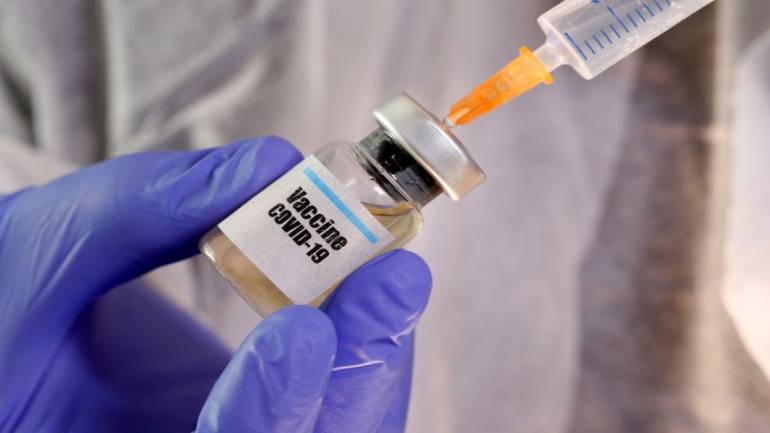Earlier this month, shares in Novavax, a small biotech company, rose 10% when its COVID-19 vaccine candidate showed promise in an early-stage clinical trial.
Among the results that most excited investors was the high level of antibodies that researchers had found in blood samples of those injected with the vaccine. Comparing antibody counts, known as quantitative serum titers or often simply “titers,” among vaccine candidates has become something of a parlor game for equity analysts, investors, and venture capitalists looking for a early indication of which of the more than 165 vaccine candidates currently in development could prove most effective and become the vaccine of choice for much of the world’s population.
In an optimistic assessment, Evercore ISI analyst Josh Schimmer noted that Novavax’s antibody levels were “far above” what Novavax’s competitors had reported. The J.P. Morgan, Eric Joseph, wrote that “it is not too much of an exaggeration to conclude that the activity [of the neutralizing antibody] of [the Novavax candidate vaccine] appears to be the best of its kind.”
The differences in reported neutralizing antibody titers also explain why, during the third week of July, when both the Oxford University COVID-19 vaccine team and startup BioNTech reported positive results from phase 1 clinical trials of their respective vaccines, a stake in AstraZeneca, which is running with Oxford, plummeted while those of Pfizer, which works with BioNTech, jumped: titer numbers were higher in the BioNTech research.
But scientists who study vaccines say there is a major problem with such comparisons: At this stage, they are completely invalid.
No “meaningful value”
Currently, it is impossible to make an apples-to-apples comparison of immune responses in blood tests among Covid-19 vaccine candidates. Until now, each candidate vaccine has been tested by a different procedure, known as an assay, performed in different laboratories. And it turns out that tests done this way produce wildly different results, even for the same vaccine.
“I don’t think the neutralizing antibody numbers that are being reported at this point are of significant value,” says John Moore, professor of microbiology and immunology at Cornell University School of Medicine, who has written about the difficulties of comparing the COVID-19 vaccine research results. “We don’t even know what a protective title really is: is a 100 title good or bad? We do not know “.
Wayne Koff, executive director of the Human Vaccines Project, a nonprofit organization that is trying to accelerate vaccine development for many, says that most research teams working on Covid-19 vaccines are testing them in trials of your own choice, often in your own labs. “This provides every opportunity to promote a candidate and make it appear that one vaccine is better than another, when in reality we do not have the data to reach those conclusions,” he says.
Many research groups have published comparisons of the antibody titers of the blood of people inoculated with their vaccine candidates with the antibody titers found in the blood of people who have recovered from Covid-19. The implication is that if the vaccine elicits a similar or higher antibody titer, and if people who have recovered from Covid-19 are immune to contracting the disease again over a period of time, the vaccine should also provide temporary immunity.
But even this analysis is flawed, says Koff. This is because, at the moment, there is no standard blood panel from recovered Covid-19 patients to assess titers. Blood samples in some studies may come from patients who were much sicker than in other studies, and the level of antibody production can vary greatly between individuals depending on factors ranging from age to genetics.
Blinding assays
Finally, there are so-called “binding assays”. These simply test whether the antibodies produced by a vaccine can adhere to the spike protein that SARS-CoV-2 has on its surface. They do this by mixing the appropriate chemical proteins, not attached to any type of virus, with the antibodies. Binding assays are considered less reliable indicators of the power of a vaccine than the two types of neutralizing antibody assays, but they are simpler, cheaper, and faster to perform.
Many of the same problems that complicate the comparison of neutralizing antibody assays apply equally to assays for T-cell responses. T cells, which hunt and neutralize infected cells, are believed to also send signals to the immune system. To speed up their response to disease, they are able to remember certain pathogens they have fought with before. Many of the groups working on COVID-19 vaccines believe that their inoculations will elicit a strong and long-lasting T-cell response that could confer immunity to those vaccinated, even if the antibodies prove short-lived.
But Mascola says that efforts to create standardized T-cell assays are, if anything, even more strained than creating standard antibody assays. That’s because, he says, T-cell testing requires a more complex blood sample that preserves both serum (or liquid part of the blood) and individual blood cells. These blood samples must then be carefully frozen and thawed, creating a more complicated protocol for standardization. Despite these difficulties, there are plans to create a standardized T-cell assay, Mascola says, but it will likely take longer than antibody assays.




